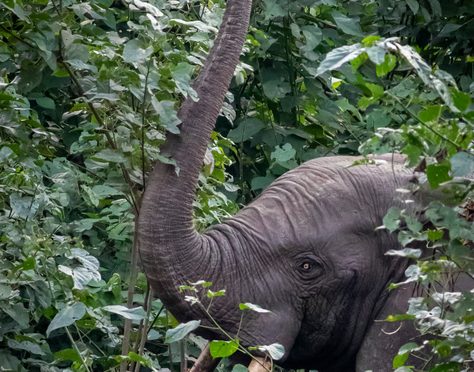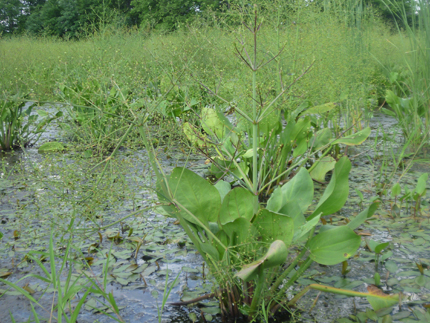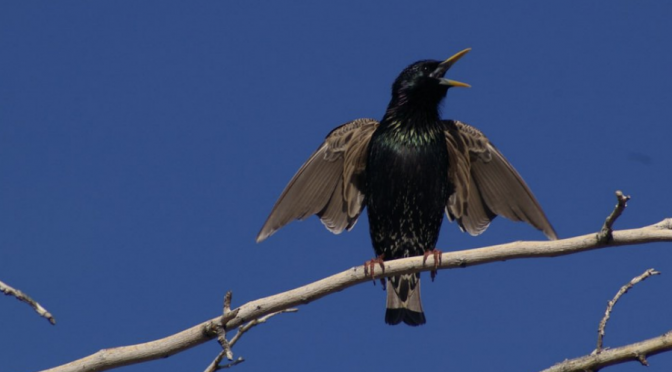Category: Ecosystems
-

Wood From Old Log Cabins Reveals Secrets Of Trees, Forests, Population And People
The historic logs showed evidence that a lot of trees began to grow at the same time across a fairly large area in West Virginia. This synchronous growth may indicate that trees began growing on cleared land that Native Americans had once inhabited and then abandoned following European contact, It’s a small area, but we…
-

Forest Elephants, Trees, Climate Change And Extinction: We Are Failing Our Friends
Across central Africa, the “elephant-effect” enhances aboveground carbon stocks by 3 billion tonnes. Indirectly, elephants contribute to reduce atmospheric CO2, and help us combat global warming. However, the collapse of forest elephant populations, mainly caused by ivory poaching, is depriving us of a formidable ecosystem engineer, which is also important for distributing nutrients and planting…
-

Wind Storms Create Opportunities For Invasive Plants… And Priorities For Land Managers
Not surprisingly, the storm-damaged areas also were significantly more invaded than unaffected matching parcels, even 12 years after the first tornado hit. And larger damaged parcels were slower to recover, both in terms of decreasing invasions and increasing tree cover. The results suggest a couple of practical management recommendations. (Click on title for full story.)
-

Methane From Wetlands Feeds Climate Change. Can Wetlands Be Redesigned?
Understanding the conditions under which methane is produced and released in wetlands could lead to solutions to reduce methane emissions,” (Click on title for full story.)
-

Forests Cleared Of Invasive Shrubs May Heal Themselves
Surprisingly, this natural regeneration exceeded the growth of native cover in unmanaged control plots – even those where no invasive shrubs were found. (Click on title for full story.)
-

Wild Birds Are Disappearing But Home Landscapes Can Welcome The Survivors
Findings suggest that although the presence of bird species, bird abundance and the number of bird species all decreased over time, in areas where homeowners provided desert landscaping – fine gravel and drought-tolerant, desert-adapted vegetation – some desert specialist birds such as verdin and cactus wren could still be found. (Click on title for full…
-

The Key To Understanding Forests Past, Present And Future Lies Beneath Our Feet.
The biome-specific dynamics between plants and soil microbes could help scientists understand how ecosystems may shift as climate change brings about warmer temperatures that alter the interplay between trees, microbes and soil, the researchers report. Because the most competitive symbiotic arrangements for a particular biome triumph, scientists would only need to understand how an ecosystem…
-

Tropical Forest Plant Diversity Is Driven By The Bugs
The study reveals the significant role of herbivores in driving diversity in tropical ecosystems, with stark implications—the loss of those populations could have catastrophic consequence on these important habitats. “If climate change continues to increase the length of the dry season in the Americas, then the dynamics of the herbivore populations will change as well,”…
-

Why Plants Won’t Take Over: They Can’t Grow Where Symbiotic Fungus Is Absent
For example, in the colonization of islands by plant species, it isn’t just factors like island size, isolation and geological development that play an important role, but also the interactions between species. The scientists found that the symbiosis of plant and fungus — the mycorrhiza — is of particular importance. (Click on title for full…
-

A New Approach To Evaluating Which Old Growth Forests Have Highest Conservation Value
“If we think of the landscape as a patchwork quilt of different types of forests of different ages, some of those patches of forest will stick around for a long time, while others might wink in and out over different time frames. Our approach lets us identify which patch has been a forest for the…
